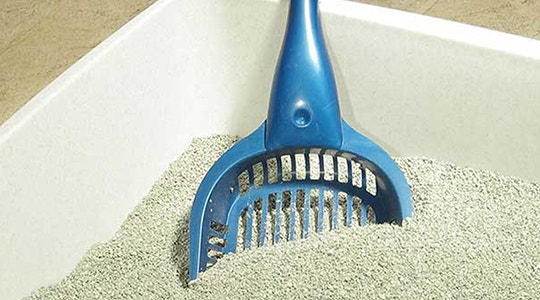
How to Protect Your Dog’s Paws in the Winter
Winter can be brutal on your dog's paws. The cold weather, snow and ice can lead to cracked or peeling paw pads — and that can be painful for your pooch. Fortunately, you can take a few simple steps to prevent pad problems and keep your dog comfortable when you’re outside on dog walks or enjoying winter activities.

Keep Your Dog's Nails Trimmed
Long nails make your dog's toes spread when they walk, allowing more room for snow and ice buildup between their toes. Unclipped nails also affect your dog's weight distribution, pushing their weight onto the back of their feet; this means they'll have less traction and will be more likely to slip on icy surfaces.
A good rule of thumb is to keep your dog’s nails long enough to be seen, but not extending past the paw or clacking on the floor when they walk.
Regular Paw Grooming
Keep your pup’s paws trimmed of extra fur between their toes. By keeping the fur between the toe pads level with the pads, you'll reduce the amount of slushy snow, salt and grit clinging to their fur. Compacted snow salt on the bottom of your dog's feet can make walking difficult and affect your pup’s ability to stay on their feet. Ice and salt balls between toes can also be a source of discomfort; they push your dog’s toes apart and pull on their fur.

Moisturize Paws before Heading Outdoors
Cold weather, ice and salt can cause your dog's pads to dry out and crack. You can help prevent this by coating their paws with a petroleum jelly-based product like Vaseline, paw balm or cooking spray before you take your pup out for a walk. Afterward, be sure to keep your dog off slick surfaces inside the house, such as tile, and outside the house, such as ice, and wipe down their paws after your trip outside.
Consider Dog Booties
Dog boots provide the ultimate protection from the elements and help your pup retain body heat. As you can imagine, many dogs do not instantly take to wearing boots, so try a gradual approach. Let them wear booties in the house for short periods of time, giving lots of praise (dog treats will help, too). Note: Fabric fastener or Velcro straps stay on the paws better than those that tie.
Use a Pet-safe Ice Melter
Salt and other ice-melting granules or chemicals often used on sidewalks and driveways can irritate your pet's paws — and cause stomach issues if ingested. Opt for nontoxic options, such as sand, gravel and non-clumping cat litters. If you do use salt or chemical de-icers, look for pet-safe brands.

Wash Your Dog's Paws after Walks
A rinse with warm (not hot) water will not only thaw out cold paws, but also wash off any salt or de-icing chemicals and dissolve ice that's formed between your dog’s toes. Keeping a designated dog towel near the door makes it convenient to wipe off your pet’s paws any time they come back inside, too.
Go for Shorter Walks
On the coldest winter days, keep your walks short. Being outside in extreme cold can lead to frostbite — for you and your best friend. Try mixing up your pup’s exercise routine with indoor activities, such as learning a new trick, navigating an obstacle course, running up and down the stairs, a game of tug or playing with your dog’s favorite toys. If you have to go outside, consider bundling up your best friend in a winter coat.
When your feet get cold and sore, the discomfort can make you miserable; the same goes for your dog. Caring for your dog's feet as you do your own, especially during the winter, can help keep your best friend looking forward to walks and quality time with you!




